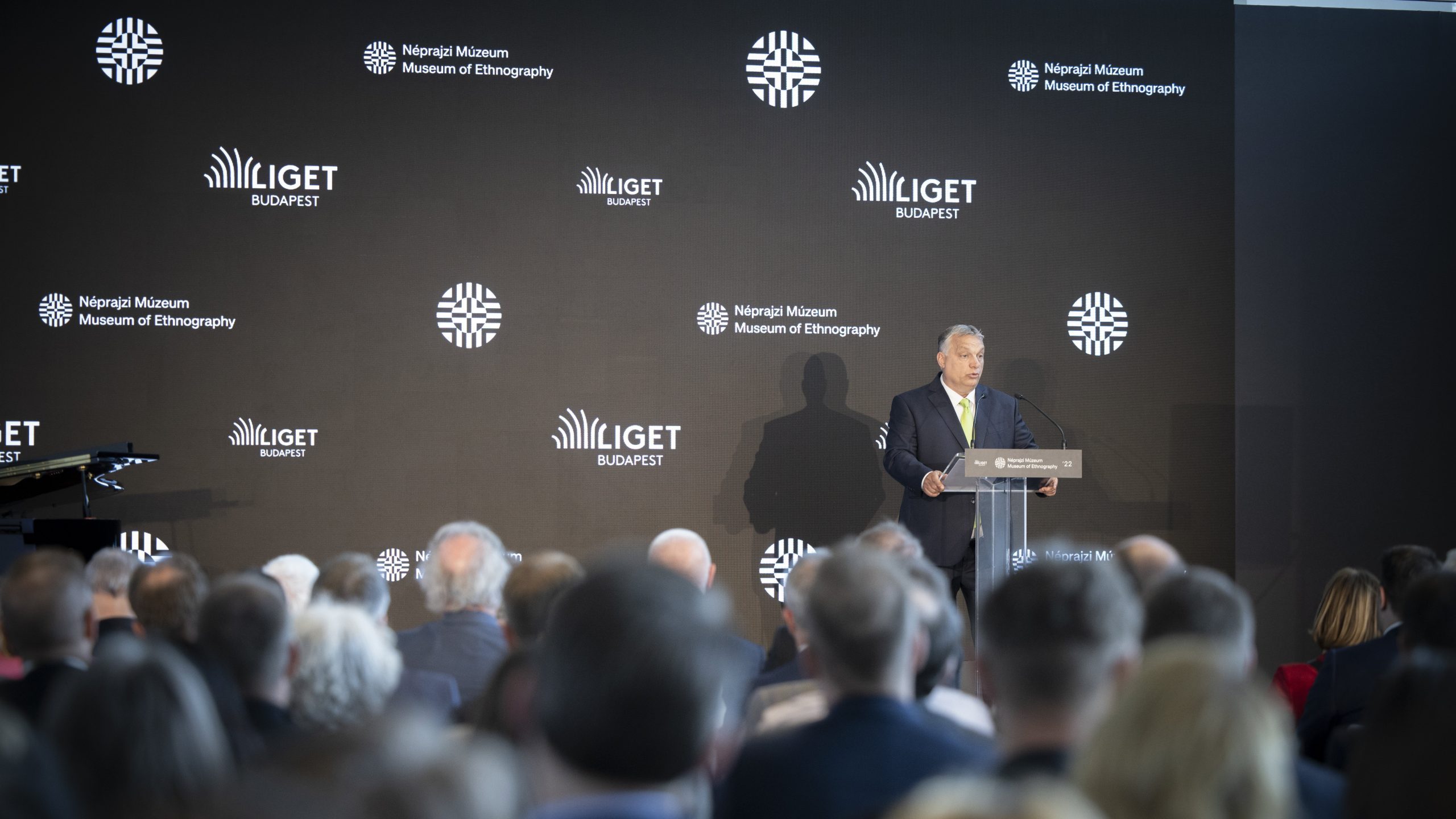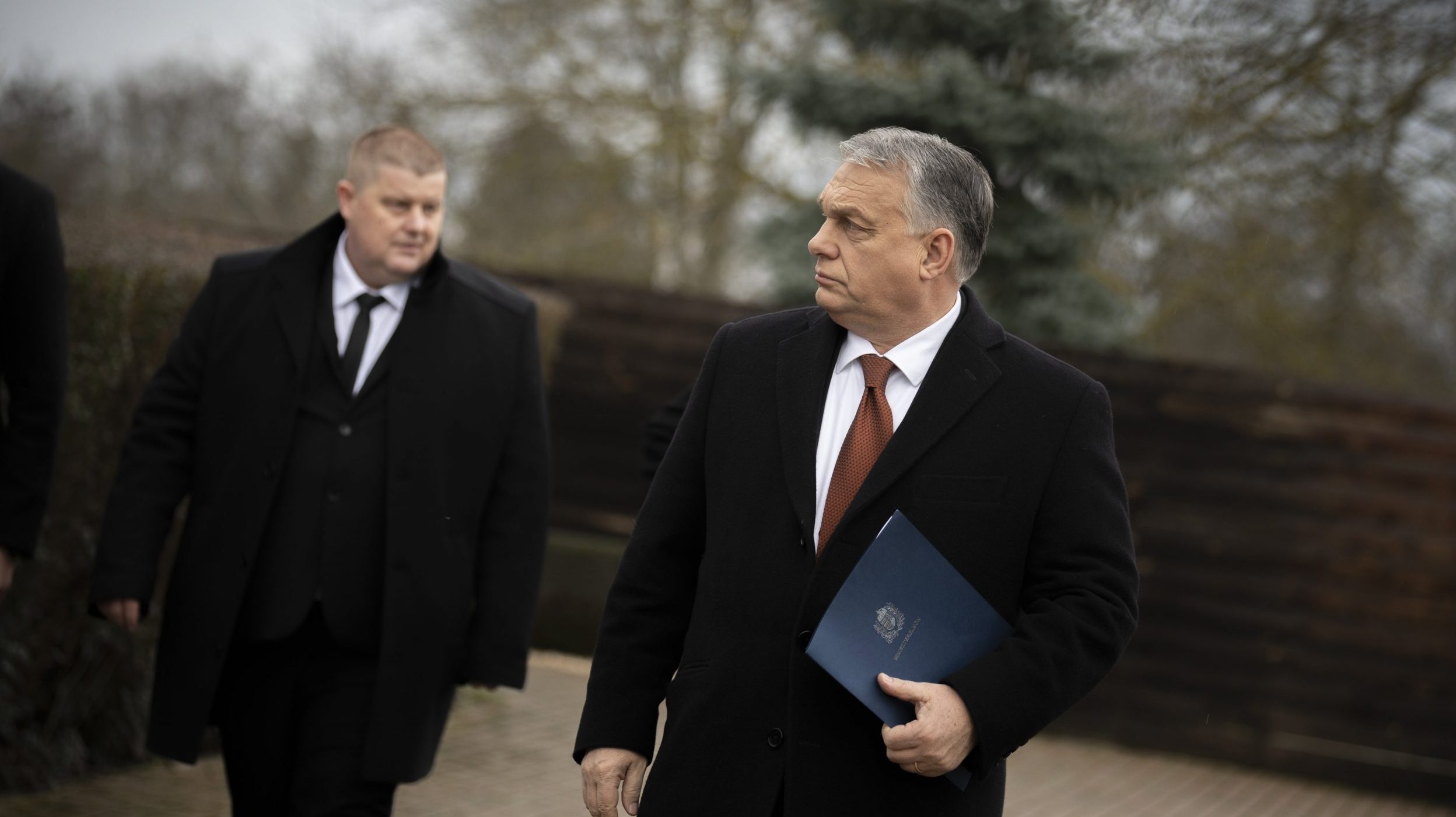
Regarding the new building, the Prime Minister said “it’s cool, Géza Szőcs would be pleased if he could see it”. He recalled that it had been his idea that Hungary, and within it Budapest would be a worthy venue for an unparalleled museum quarter.
Mr Orbán stressed that the government had decided “in the midst of an uncertain and changing world” to use Hungary’s resources for culture, cultural venues, museums and concert halls, the refurbishment of the built-up environment and Budapest’s most beautiful park.
“While everyone kept saying that it was impossible, we’ve been moving forward step by step, building by building; in actual fact, on 3 April the Hungarian people gave us confirmation that we did the right thing by having done it, and they believe we need more, more and more, Europe’s largest cultural project must be completed in its entirety. I believe that we have received authorisation to complete the programme in full,” he stated.
He highlighted that they wanted a building where the natural beauty of Hungarian folk culture can unfold as completely as possible. He said today we are celebrating the fact that “our treasures have been deposited in a worthy place,” and we have one task remaining: we must grow up to dedicating not just a single day to celebration, but to finding joy in our Hungarianness every single day. In his view, this is facilitated by this remarkable building which he described as another outstanding example of “Hungarian invention and sense of beauty”.
In his speech, the Prime Minister took the view that the culture of a nation is “a firm road sign” which shows where we come from and also designates which way we should be heading. But, he warned, if we abandon this, then “we lose our way beyond all hope,” and after a while we do not even know what we are fighting for.
He stressed that the importance of culture multiplies when it comes to Hungarian folk art because folk art shows what it is like to be Hungarian and also how good it is to be Hungarian.
“When we see our ethnographic heritage, we see it not only as beautiful, but we also become immersed in a sensation of freedom and inadvertently smile. It’s good to be Hungarian. This is why we can predict and resist whenever they want to impose restrictions on us, and this is why we recognise in good time if there is trouble, if our culture, our customs, our way of life, our heritage are under threat,” he said.
He took the view that holding onto beauty and being Hungarian stems from a single root, “we see and understand beauty in the Hungarian world, the Hungarian soul is beautiful, the Hungarian life is attractive, the Hungarian world is easy on the eyes and the soul”.
He said in this museum it is also revealed that being Hungarian is “like a birthmark, indelible,” it is passed on from generation to generation in the passing centuries.
Mr Orbán warned that no one other than ourselves is able to preserve Hungarian culture; if we disappeared, something irreplaceable would disappear from the world together with us.
The Prime Minister also said while the previous building of the Museum of Ethnography – the former building of the Curia in Kossuth tér – was beautiful, its form did not match the content. However, the new building now completed is different because content and form meet in it. This building reflects the conviction that there is beauty in the world, that even in the world of ‘a dime a dozen’ buildings and office complexes lacking in imagination it is possible to create something unique which blends into its environment, catches the eye and is good for the soul, he said.
At the beginning of his address, Mr Orbán separately welcomed prospective minister for culture and innovation János Csák and former Mayor of Budapest István Tarlós without whom, he stressed, they would not have been able to embark on this “splendid adventure”. He also observed that he would have likewise greeted incumbent Mayor of Budapest Gergely Karácsony but “for reasons of respect for the grieving” – as he decided not to attend the inauguration ceremony – he would abstain from doing so. He recommended to those who are opposed to the Liget Budapest Project that they acquaint themselves with the “Dakota tribal wisdom”: “when you discover that you are riding a dead horse, the best strategy is to dismount”.
The new building situated on the edge of Városliget, at Ötvenhatosok tere, which is in the shape of two intertwining hills – the latest development of the Liget Budapest Project – will open to members of the public on Monday.


